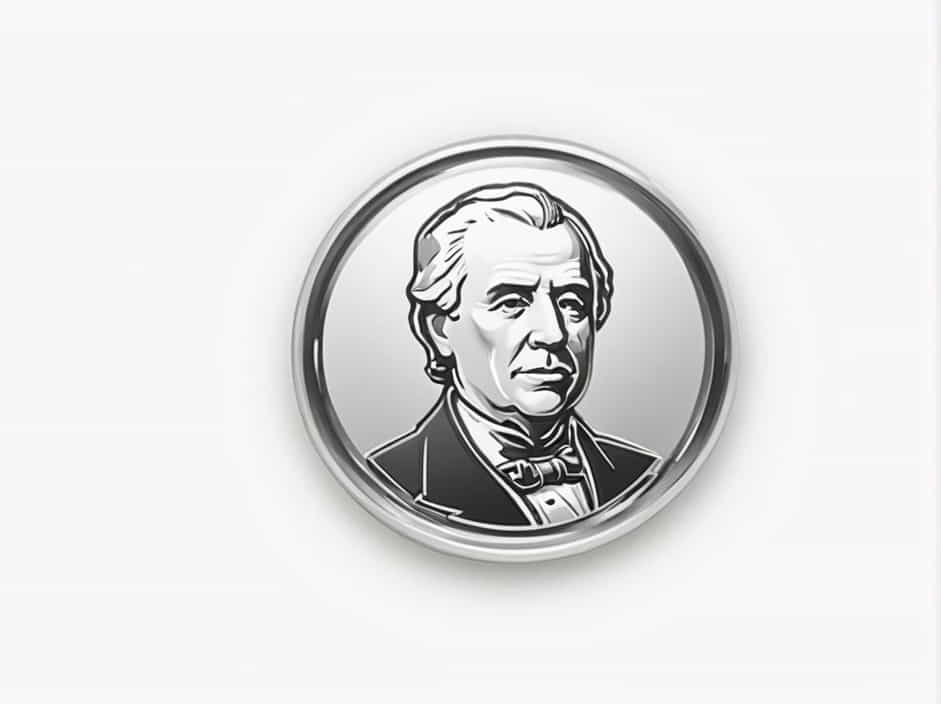The hundred-dollar bill is one of the most recognizable and widely used denominations of U.S. currency. It features a prominent figure in American history-Benjamin Franklin. Franklin was not a U.S. president, yet his contributions to the founding of the country earned him a place on this high-value bill.
In this topic, we’ll explore who Benjamin Franklin was, why he is featured on the $100 bill, and interesting facts about this iconic banknote.
Who Was Benjamin Franklin?
Benjamin Franklin (1706-1790) was one of the most influential figures in American history. He was a polymath, meaning he excelled in multiple fields, including science, writing, diplomacy, and politics.
Key Contributions of Benjamin Franklin
-
Founding Father – Franklin played a crucial role in drafting the Declaration of Independence in 1776.
-
Diplomat – He secured French support during the American Revolution, which helped the U.S. win independence from Britain.
-
Inventor and Scientist – Franklin conducted famous experiments with electricity, invented the lightning rod, and contributed to scientific understanding.
-
Printer and Writer – He published Poor Richard’s Almanack, a widely read publication filled with proverbs and wisdom.
-
Founder of Institutions – Franklin helped establish the first public library, the University of Pennsylvania, and the U.S. Postal Service.
His impact on American history is vast, making him an ideal choice for a high-denomination banknote.
Why Is Benjamin Franklin on the Hundred Dollar Bill?
Franklin appears on the $100 bill because of his significant role in shaping the United States. While many U.S. bills feature presidents, Franklin stands out as one of the few non-presidents honored on American currency.
Reasons for His Selection
-
Influence on U.S. History – Franklin’s work as a statesman, diplomat, and innovator made him a key figure in early America.
-
Economic Philosophy – As a successful businessman and advocate of thrift and industry, Franklin represents financial wisdom.
-
Symbol of Intelligence and Innovation – His contributions to science, printing, and education align with the spirit of progress and economic strength.
-
Connection to Currency – Franklin was a strong supporter of a stable monetary system and helped design early U.S. paper money.
Design and Features of the $100 Bill
The modern U.S. hundred-dollar bill has undergone several design changes to improve security and durability.
Front Side of the $100 Bill
-
Portrait of Benjamin Franklin – His face is the main feature.
-
Blue Security Ribbon – A 3D security strip helps prevent counterfeiting.
-
Watermark – A faint image of Franklin appears when held up to the light.
-
Color-Shifting Ink – The bell in the inkwell changes color from copper to green when tilted.
-
Large Gold “100” – Located on the back-right corner, making it easy to identify.
Back Side of the $100 Bill
-
Independence Hall – The site where the Declaration of Independence was debated and adopted in 1776.
-
New Color Scheme – The newer design includes a more vibrant blue and gold appearance.
Interesting Facts About the Hundred-Dollar Bill
-
Largest Denomination in Circulation
The $100 bill is the highest-value U.S. note still in production. Larger denominations like the $500 and $1,000 bills were discontinued. -
Popular Worldwide
The hundred-dollar bill is widely used in international trade and savings, making it one of the most circulated bills globally. -
Nicknamed “The Benjamin”
Because of Franklin’s image, the bill is often referred to as "Benjamins" in pop culture and slang. -
Not Made of Paper
Like all U.S. currency, the $100 bill is made of a cotton-linen blend, making it more durable than regular paper. -
Anti-Counterfeiting Features
The modern $100 bill includes advanced security features like color-shifting ink, watermarks, and microprinting to prevent forgery. -
No U.S. President on the $100 Bill
Unlike the $1 (George Washington), $5 (Abraham Lincoln), and $20 (Andrew Jackson) bills, the $100 bill is one of the few featuring a non-president.
The Evolution of the Hundred-Dollar Bill
The $100 bill has changed multiple times since its first release in 1862.
-
1862 – First issued as a legal tender note during the Civil War.
-
1914 – Introduced in Federal Reserve Note form, featuring Franklin.
-
1929 – Reduced to its current smaller size (previous bills were larger).
-
1996 – Added new security features like a watermark and color-shifting ink.
-
2013 – The latest redesign introduced a blue security ribbon and a gold inkwell.
Why the Hundred-Dollar Bill Matters
The $100 bill is essential to the U.S. and global economy. It is used for high-value transactions, savings, and reserves by businesses, banks, and individuals.
Role in the Economy
-
Stored Value – Many people and organizations hold $100 bills as a form of wealth storage.
-
International Trade – It is widely accepted outside the U.S., especially in countries with unstable currencies.
-
Symbol of Financial Strength – The bill represents economic power and trust in the U.S. dollar.
The hundred-dollar bill, featuring Benjamin Franklin, is one of the most iconic and valuable U.S. banknotes. Franklin’s legacy as a Founding Father, inventor, and diplomat makes him a fitting choice for this denomination. With its advanced security features and global importance, the $100 bill continues to be a symbol of economic stability and financial power.
